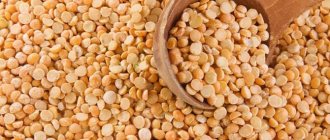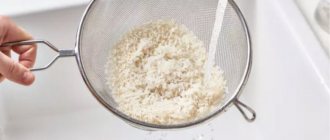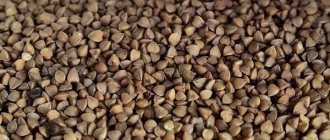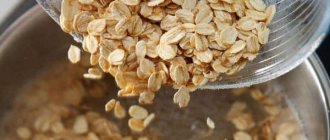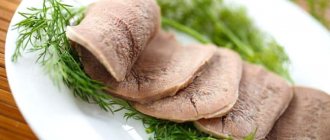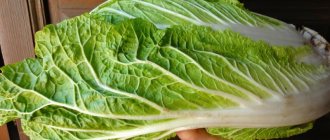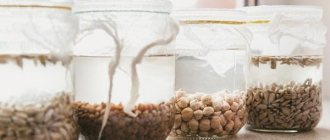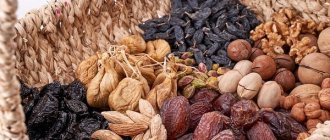Rice is one of the most popular food grains around the world. Unprocessed rice may collect and may have chemical contaminants. Find out how to rinse rice below because rinsing rice helps remove excess starch.
Almost every kitchen uses starchy grains with meats and vegetables. One of the reasons for the popularity of rice is that it is readily available and easy to prepare. It's nutritious and goes well with anything. Whether you like rice with stir-fried vegetables or grilled meats, or you want a starchy load in the form of desserts.
How to wash rice for pilaf
Some novice housewives are tormented by the question of how to rinse the cereal so as not to make the taste of the future pilaf worse?
Before washing the rice grains, you should remember some simple rules:
- You need to wash the cereal in clean and filtered water. Namely, tap water is not suitable for such a process. Why? Such water contains harmful elements and foreign odors, with which the cereal is immediately impregnated during the first rinsing.
- You should use warm or ice water, it depends on the type of cereal. Processed grains are usually washed in warm liquid. Expensive rice varieties (basmati, jasmine, red and brown rice) are washed in ice water. Basmati only needs to be doused with water; other types of grains need to be washed until the water is clear.
- Rice grains must be washed at least 6 times. One or two sinks is not enough. It is very important that all foreign elements contained in it are washed out of the rice. For this purpose, thorough rinsing is necessary.
- If necessary, soak the cereal. And definitely, in drinking clean water. For this purpose, heated water to approximately 65 C is used. It will better remove excess starch. In addition, warm water is much easier to absorb into the grains, so the rice grains will absorb less oil during cooking, and the pilaf will turn out to be a light and dietary treat. The optimal holding time is about half an hour. And it is strictly forbidden to pour boiling water over the cereal: the side dish will turn into a boiled lump.
- The grains should be washed after soaking. Even cold tap water will do for this purpose. Place the cereal in a cup, add water, stir with a spoon. Next, drain the liquid. And this procedure should be repeated several times.
That's all. Well-washed rice is ready for cooking. Rest assured: every treat prepared from properly washed cereal will be tender and quite nutritious.
Yandex pictures
Washing rice: tips depending on the type
To make the dish tasty and correct in structure, remember that it is important to take into account the type of grain. For example, when preparing basmati, it needs to be washed about 3 times, like long-grain rice. Regular cereals, as well as rice, which is used in making rolls - 5-7 times.
Be sure to consider the type of rice before rinsing (Photo: verywellhealth.com)
When preparing risotto or pudding, the rice is either not washed, or it is done at most twice. Otherwise, the rice flour will be washed out, and as a result, it will not be possible to achieve the desired consistency of the cereal. Round and short grains, from which porridge or filling for pies are prepared, should be washed, lightly rubbing the grains with your fingers, then left for 15 minutes in warm water and rinsed again.
Do I need to soak rice for pilaf?
After carrying out many studies, scientists found that the cereal contains a large amount of starch. This affects its viscosity in making most treats. This especially applies to pilaf. The more starch there is in the cereal, the worse it is for the pilaf. Because we are already accustomed to seeing golden brown buttery rice soaked in lamb fat. Starch prevents rice grains from being soaked, making the grains dry. Therefore, before you start preparing pilaf, the cereal should be soaked in warm, clean water.
1 hour is enough for the grains to increase in volume, crack along the edges and free themselves from excess starch. It is precisely into these very cracks that oil or fat fully penetrates and saturates the treat. When soaking cereal, it is preferable to change the water at least 2 times. In clean water, the side dish releases starch much better.
If you take this into account, literally after a quarter of an hour the grains will begin to increase slightly in volume. This means that it will take less time to cook in a cauldron.
How to properly soak rice for pilaf:
- Only clean running water is used.
- Soak in a glass container.
- Before the process, all the grains are thoroughly washed so that all excess is removed with the liquid.
- The dishes are left on the table.
- Before cooking, the cereal is washed again.
These are the simple rules for working with the most famous grain, which will help you prepare the most delicious porridges and crumbly dishes.
Many housewives advise soaking the cereal in salt water. The cereal will absorb as much salt as needed.
Rules for cooking in the microwave
It’s quite easy to prepare a delicious dish from this cereal in a microwave oven. The process of its creation includes the following steps:
- Before cooking, the grains are thoroughly washed under cold water;
- the cereal is placed in a special microwave-safe bowl and filled with cold water (1:2);
- the liquid is salted to taste;
- under a closed lid at a power of 500 W, the dish is cooked for about 18 minutes (do not forget to stir the rice with a spoon twice during cooking);
- at the end of cooking, the dish should sit under a closed lid for 10 minutes, and then it should be stirred;
- There is no need to rinse the rice under water at the end of cooking.
How long
Having soaked the cereal overnight (for 7-8 hours), in the morning it will definitely be ready for making pilaf. But the hardness of the grains should be taken into account. If they are not completely solid, and they will get wet for a long time, then even before the liquid boils, they will be able to boil. Therefore, this method is only suitable for solid species. Some soft types are saturated after 30 minutes, while other hard ones, for example, devzira and basmati, after a few hours. Over the years, one begins to understand how long each variety needs to be aged.
If you keep the cereal in hot water, only 2 hours is enough, if in cold water – from three hours. It is recommended to soak red rice for 3-5 hours - the boiling time will noticeably decrease. The brown variety of cereal requires a special approach - it is hard, and for cooking it is worth soaking it for 8-12 hours.
pixabay.com
How to cook
First of all, you need to clarify: there is no need to cook rice separately, completely or partially, and then mix it with zirvak. It won't be pilaf.
The rice is placed in the cauldron when the zirvak is ready. Whether or not to add spices, when to add chickpeas or dried fruits, etc. depends on the recipe individually. But in pilaf there is a general method of cooking that concerns rice.
How long to cook rice: Cook soaked rice in pilaf for 15-20 minutes, depending on the variety.
- Use a cauldron.
- Select the right rice and prepare it.
- Don't disturb the rice. Do not disturb it with a slotted spoon until the pilaf is cooked, do not even look under the lid again. Rice in pilaf is steamed rather than boiled.
- Pour in as much water as needed.
- Pour boiling water.
- For your rice, find exactly how much water it needs and how long it takes to cook, and don't mess it up.
- Heat: if, say, rice is cooked in pilaf for 15 minutes: 3 minutes - high heat, 7 minutes - medium, 2 minutes - low.
- After removing the cauldron from the heat, leave the pilaf covered for 10-20 minutes. It is good to line the lid with a towel so that steam and heat do not escape.
How to make it crumbly
What to do to make the pilaf lush? After all, you don’t want porridge with meat, but pilaf. There are conditions that, if not met, may prevent you from getting fluffy rice:
- Choose glassy varieties that hold their shape well.
- Rice needs to be washed. The water should drain clear. It was as if it had never gone through the rice. Do not rub the rice with your hands - this breaks the grains.
- Don't overcook the pilaf.
- Do not add more water than necessary.
- Do not stir the pilaf until cooked.
Do I need to soak parboiled rice?
The steamed variety is the easiest for kitchen masterpieces. How long will such peeled grains last to become the most crumbly side dish? The answer is from 30 to 2 hours.
Red rice
This type of cereal is soaked for 3-5 hours. Moreover, we should not forget that after this process, the time for boiling rice is reduced by almost 2 times.
Yandex pictures
Brown (brown) rice
This cereal needs a special approach: if it is not soaked, it simply will not cook. The shells of the grains are quite rough and contain a large number of inhibitors. To cook brown rice, you need to soak it for at least 8-12 hours.
Yandex pictures
Rinsing rice after cooking
This is influenced by the dish itself and the type of rice from which it was prepared. The rice is washed to make it fluffy. The cereal is slightly undercooked, washed and then added to various dishes that will still be cooked. This will allow the rice to be fully cooked.
There is no need to rinse rice if it is cooked in the microwave at medium power. If cooked in a slow cooker or steamer.
Also, rinsing after steaming is not required for parboiled rice. It lends itself to special heat treatment and because of this it absorbs moisture faster, doubles in size, but at the same time retains its shape perfectly.
Before cooking, rice can be washed with hot water, but not with boiling water, and soaked in hot water before cooking. The temperature of such water should be sixty degrees, but no more. But after cooking, you need to use cold water for rinsing. The ideal temperature for cooking rice is ninety-five degrees. At this cooking temperature, the rice acquires a pleasant taste and becomes more crumbly.
AlinaAuthor of the article
Did you like the article?
Share with your friends:
Comments (1)
- 1.43257E+14 27 Dec 2022 at 20:36
To make rice cook faster, you can soak it for 30–60 minutes. Then the cooking time will be reduced by almost half. However, it is better to reduce the amount of water used for cooking.
Answer
A few recommendations for delicious pilaf
Knowing how to properly make a side dish is quite important. But this is not all that is needed to make real pilaf that your family and friends will admire. Here are some more useful tips that will certainly be very useful to you:
- Some chefs use beef to make pilaf. But this is not the best choice, since the dish turns out too dry. It is much better to take beef or pork. Chicken is also allowed if that's your preference.
- The oil used is important. Uzbeks always take two - cotton and sesame, and also always add fat tail fat. This results in a richer aroma.
- To ensure a successful pilaf, it is recommended to use a cast iron, copper or aluminum cauldron. This may seem unusual, but the material of the cookware has a great influence on the taste of the dish.
These tips can help you make the perfect pilaf that has amazing texture and flavor. Stick to them, and you can please your family with an incredibly tasty dish, using the cheapest grains and spending a minimum amount of time and effort.
So, rice should definitely be soaked. The purpose of washing and soaking grains is well known: the grain is cleared of unnecessary starch, acquires an interesting shade, becomes crumbly and makes the taste of the dish more vibrant and appetizing. The suitable temperature for soaking in water is 60 C. Steamed rice grains can also be soaked, but this is not necessary. In addition to everything, you need to wash any grains. First, this is used for hygienic purposes - to clean dust, dirt and possible chemicals. substances.
pexels
Cooking tricks and tips
It must be remembered that cooking rice is a creative process. The times and proportions in the recipe are given for standard cereal.
The quality of the result can be affected by the ripeness of the rice, the variety, and the degree of boiling water. Therefore, it is worth practicing cooking rice, using one variety to begin with. And don’t be upset if the result is slightly different from what was planned.
Another nuance is the choice of a dish that includes rice.
As for spices, it is good to add cumin (or cumin), chili pepper, and turmeric to rice.
But it is best to choose ghee. In Indian culture it is considered the most beneficial.
Brown (aka brown) rice appeared in stores not long ago, but is becoming increasingly in demand among supporters of proper nutrition - this grain is healthier and more valuable than the usual white one. And those who encounter this product for the first time have a question: how much and how to cook brown rice correctly, so that neither the taste nor the benefits of this grain are affected.
To avoid rinsing
If you need to get a crumbly porridge, you can prepare it in such a way that you don’t have to wash it out. There are the following methods for this:
- Heat the rice grains in a thick-bottomed pan greased with vegetable oil, stirring until translucent. Then pour boiling water or broth. As a result, the side dish will be aromatic and crumbly.
- Cook the porridge until half cooked in a heat-resistant pan, add oil, transfer to the oven, heated to 180 degrees and bake until done.
- Pour two volumes of water over the cereal and cook over low heat until the liquid has completely evaporated. Place a little oil in a pan and leave the rice covered until done.
Whether to rinse rice or not depends on how you want it to end up. Just do not do this under any circumstances under an open tap, so that microbes from the water do not get into the prepared food.
Source
Cooking in a frying pan
Another way to prepare fluffy rice is to pre-fry it in a pan.
To do this, place the washed and dried ones in a frying pan heated with vegetable oil (for one tablespoon of grains - one and a half tablespoons of oil). Add salt and other spices if necessary. Mix well until the oil is completely absorbed into the cereal. Then pour two glasses of boiling water, cover tightly with a lid and cook as usual in a saucepan.
This option is good because the rice turns out not only crumbly, but also more satisfying. The oil can be flavored with garlic, herbs (thyme, rosemary, etc.). To do this, before placing the cereal, fry the garlic and herbs crushed with the flat side of a knife for a couple of minutes, then remove them and place the grains there.
Cook traditionally in a saucepan
This is the most common method, the instructions for which you can read on almost any package of rice. But I must admit, not everyone can get a crumbly side dish using this principle right away, because rice varies in quality, and a lot depends on the pan and stove. Even a beginner can master the following trouble-free method under any circumstances and with any, even the most unsuitable, utensils.
For one glass (200 grams) of rice, take two of the same glasses of water and salt to taste. Immediately put everything on the fire and boil. When this happens, cover the pan with a lid, reduce the heat to very low and cook for about another 15 minutes. It is very important not to open the lid or touch the rice (do not stir).
After time has passed, turn off the heat (remove from the burner if it is an electric stove or hob) and leave the grains covered for another 5 minutes.
The principle of pasta
The good thing about this method is that it doesn’t require any extra hassle. Wash the grains thoroughly, then place them in a sieve or colander to dry. At this time, put a few liters of water on the fire and let it boil. Once it boils, add the rice to the water and stir occasionally with a spoon. Reduce heat slightly to maintain a moderate simmer and add salt to taste.
Determine readiness by tasting the rice (it should be chewable). Once it is ready, drain the rice and water through a colander. If it suddenly turns out that you took out the product a little earlier than it was ready, return it to the hot pan (without water) and leave for 5-7 minutes under the lid.
With this method, the side dish cooks much faster and in fact always turns out crumbly.
Cooking rice in bags
A very convenient way is to cook rice in special bags. Today, boxes with them are sold everywhere and greatly facilitate the process. The cereal in these bags, as a rule, has already been processed to the required state (steamed, washed). Just boil a large amount of water and put in a bag of rice. The water must completely cover it.
See the package for the required amount of cooking time, as different varieties require different times.
There is no need to make additional holes in the bag: they are already there. And it is precisely because of this that the grains absorb exactly as much water as they need. As soon as the rice is ready, hook the bag onto the special loop and place in a colander. After the water has drained a little, open the bag with a knife or scissors, take out the cereal and leave it in a colander to allow the excess liquid to drain a little more.
